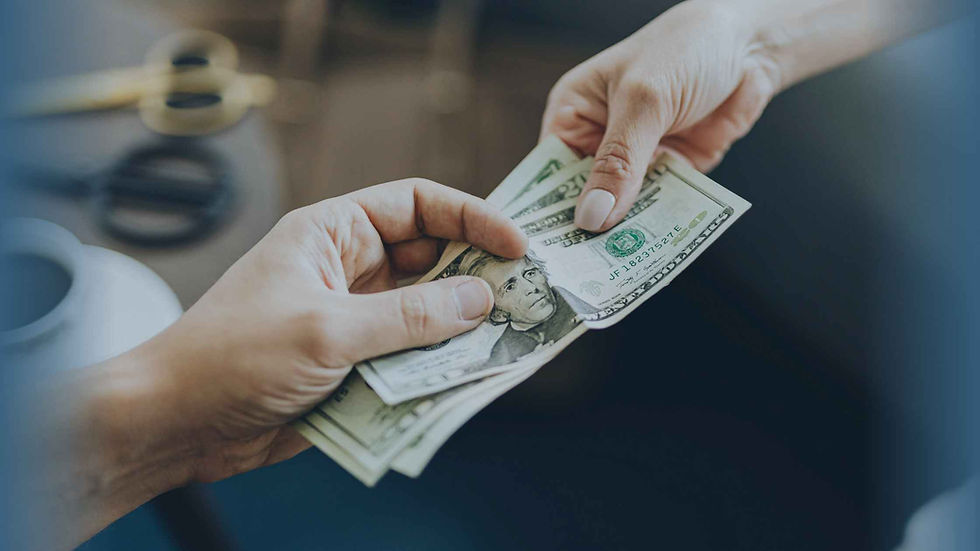8 PPP Loan Myths Debunked
- Fiffik Law Group, PC

- Jul 19, 2020
- 4 min read

#1 There’s no point in applying
A PPP loan is worth applying for. Calling it a loan is misleading. If done correctly, it’s a grant – you won’t have to pay it back. So why not apply?
While it’s true that overwhelming demand has slowed down some banks’ approval processes, that doesn’t mean you should give up on PPP. In fact, it’s now easier than ever to apply.
The SBA is working with financial technology (fintech) companies to make PPP applications more available en masse. You can apply for PPP online through one of these companies, without ever having to leave your home. And you don’t need to worry about your application falling through the cracks.
If you have already applied for PPP through a bank but haven’t heard back, you can apply again through a different institution.
Further Reading: Fintech lenders still accepting PPP Loan applications.
#2 Every business is eligible
Yes and no. If you were not in business before February 15 of this year, your business is not eligible. Even if your business existed before February 15, if your business did not have income and was not paying employees or making distributions to you as sole owner, you will not be able to obtain a PPP loan. This is because the PPP is intended to help businesses sustain continued payment of wages and other business expenses for eligible businesses. The loan application requires submission of past expenses to support the amount requested. If you have no prior income or expenses, then there will be nothing upon which to base your application.
#3 I can only get the PPP if I have employees
Business entitles that have no employees on payroll are indeed not eligible for the PPP. However, self-employed individuals, such as independent contractors and sole proprietors, can apply for the PPP, even if they don’t have anyone else on payroll. The term “Paycheck Protection Program” is misleading, in this case. You don’t need to write paychecks to get covered. When you apply, your loan amount—and forgiveness—will be based on your 2019 net income, as reported on Schedule C of your tax return. This is known as the “owner compensation replacement”.
#4 I can get the PPP and claim Pandemic Unemployment Assistance funds
Unfortunately, you cannot get a PPP loan and get unemployment benefits at the same time. The PPP, Pandemic Unemployment Assistance, and unemployment benefits are all considered sources of income. Although it can be tempting to claim funds from all the relief programs, it is not allowed, and you could face consequences.
For self-employed individuals who have received a PPP loan and are claiming their eight-weeks’ worth of 2019 net profit as Owner Compensation Replacement (OCR), you are considered to be fully covered for the eight-week coverage period and you would not qualify for additional unemployment benefits or PUA. This applies as well to those using a 24-week covered period. But since it appears that you need to claim 10 weeks’ worth of net profit over 24 weeks, you may be eligible for partial unemployment benefits.
If you’re already registered with your state’s unemployment benefit department, you will need to report your PPP loan as income. Check with your state’s labor department for specific details. After your coverage period ends, you can begin collecting full unemployment benefits again.
#5 I can use the PPP loan funds like a low-interest loan
Not exactly. The PPP was designed to ensure paychecks would not be impacted by the COVID-19 economic slowdown. If you have employees, your PPP loan is to be used to maintain their pay and rehire anyone who had to be laid off. It’s not meant to be used for working capital —the SBA’s Economic Injury Disaster Loan (“EIDL”) program is a better fit for that.
When you apply for a PPP loan, you must agree to spend the funds on certain things. In particular, to retain workers and maintain payroll or make mortgage interest payments, lease payments, and utility payments. The PPP rules prohibit using the funds on any other general business expenses. It cannot be used like a garden-variety business loan.
#6 The SBA will change the rules so nobody will be able to get the loan forgiven
The SBA has changed the PPP rules many times. With updated guidance being continuously released and revised by the SBA and Treasury, it’s understandable that small business owners may be hesitant to take on a loan and keep a liability on their balance sheet.
In recent weeks, government officials have been working on several bipartisan initiatives to provide greater flexibility with the PPP program. We expect the forgiveness process to be simplified and streamlined as time goes on, not made more restrictive. As an example, the recent Paycheck Protection Flexibility Act extended PPP loan periods from 8 weeks to 24 weeks, giving businesses more time to spend their funds.
Further Reading: New EZ PPP Loan Forgiveness Application Available
#7 You can only receive one SBA loan at a time, so PPP applicants must rescind other SBA loan applications.
Borrowers may apply for a PPP loan and other SBA financial assistance, including disaster loans and Section 7(a) loans. However, you cannot use PPP loan proceeds for the same purpose as your other SBA loan(s). Loan proceeds need to cover payroll for a different period or other qualifying costs. This includes the up to $10,000 grant available with EIDL loans.
#8 PPP could harm my credit score or trigger an audit
PPP does not require a credit check, so applying won’t harm your score. Also, while the rules may eventually change, for now, the government is saying they won’t audit anyone who gets a PPP loan of less than $2 million.
As always, our attorneys are here to help and answer any questions about all SBA loans, including the PPP loan program.


